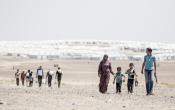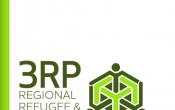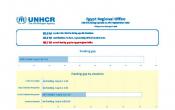Egypt
Operation: Egypt
Location
{"longitude":30,"latitude":27,"zoom_level":0}
Latest update of camps and office locations 13 Jan 2016. By clicking on the icons on the map, additional information is displayed.
Key Figures
| 2015 end-year results | |
| 12,000 | households received monthly cash grants |
| 5,600 | cases were submitted for resettlement |
| 14,000 | households received conditional education grants |
| 80% | per cent of refugees had access to primary health care |
| 2016 planning figures | |
| 100% | people of concern enjoying freedom of movement (baseline) |
| 35,000 | registered children targeted to be enrolled in primary education |
| 12,000 | people of concern targeted to receive cash assistance (8,800 households) |
| 3,500 | estimated number of refugees to depart for resettlement countries |
Latest Updates
People of Concern
4%
Decrease in
2015
2015
| 2015 | 250,697 |
| 2014 | 261,741 |
| 2013 | 253,268 |

[["Refugees",212500],["Asylum-seekers",38171],["Returned refugees",4],["Stateless",22]]
Loading ...
Budgets and Expenditure for Egypt
< Back
2015
{"categories":[2012,2013,2014,2015,2016],"budget":[24.66344711,63.04862036,83.25535602,85.170372352,82.03679034],"expenditure":[20.66369279,37.65051166,51.97807067,46.44128458,null]}
{"categories":[2012,2013,2014,2015,2016],"p1":[24.59455721,62.94614796,83.18539387,85.120372352,82.03679034],"p2":[0.0688899,0.1024724,0.06996215,0.05,null],"p3":[null,null,null,null,null],"p4":[null,null,null,null,null]}
{"categories":[2012,2013,2014,2015,2016],"p1":[20.59824744,37.56700959,51.92002903,46.40966352,null],"p2":[0.06544535,0.08350207,0.05804164,0.03162106,null],"p3":[null,null,null,null,null],"p4":[null,null,null,null,null]}
Loading ...
CHOOSE A YEAR
- 2014
- 2015
- 2016
Working environment
- Egypt remained a destination and transit country for refugees and asylum-seekers from some 65 countries, including Iraq and the Syrian Arab Republic (Syria).
- Difficult socioeconomic conditions, coupled with the loss of hope, contributed to the continued trend of refugees leaving the country by sea, land or air. An increasing number of asylum-seekers and refugees were arrested and detained for irregular departure from Egypt.
- Residency issues, variations in funds available for Syrian refugees and refugees of other nationalities, and difficulties for some humanitarian organizations to receive government approval to operate in the country were among the main protection and operational challenges in 2015.
- Refugees of certain nationalities had access to the public primary health care system and education institutions. However, asylum-seekers and refugees had limited access to specialized health services and the lack of capacity in public schools to absorb refugee children remained of concern.
Population trends
- In 2015, UNHCR registered more than 7,800 Syrians, some 3,000 of which were new arrivals, and more than 19,700 individuals of other nationalities, 13,000 of which were new arrivals.
- The Syrian refugee population decreased by 15 per cent in 2015, from 138,400 to 117,600 people. Verification and inactivation procedures were implemented, and the files of 26,163 Syrians and 6,424 individuals of other nationalities were inactivated when it was deemed that they were no longer present in the country.
Achievements and impact
- UNHCR led the inter-agency refugee response and coordinated the Regional Refugee and Resilience Plan (3RP) for Syrian refugees, in coordination with UNDP and other partners.
- The Child Protection 2014-2016 Regional Initiative for unaccompanied and separated children was implemented.
- The “graduation approach” for sustainable livelihoods opportunities and the mainstreaming of UNHCR’s Global Sexual and Gender-Based Violence, Child Protection, Education and Health Strategies were implemented.
- The waiting period for refugee status determination was halved to 18 months, when compared to the waiting period in 2014.
- UNHCR stepped up its collaboration with the League of Arab States, including working on the draft Arab Convention for Child Protection and initiatives to raise awareness of refugee issues.
Unmet needs
- In Egypt, socioeconomic assessment results showed that 85 per cent of Syrian refugees are severely or highly vulnerable. UNHCR was only able to provide support to 32 per cent of vulnerable Syrian cases and 18 per cent of the vulnerable refugees of other nationalities.
- Difficulties were faced in supporting refugees in need of life-saving health care and in supporting hospitals to provide timely and quality care.
- Education grants for refugee children who were not allowed to attend public schools covered less than 30 per cent of private school fees.
Working environment
Egypt is a signatory to the 1951 Refugee Convention and its 1967 Protocol, and the 1969 OAU Convention. Nevertheless, as the country has not yet developed national asylum procedures and institutions, UNHCR carries out the functional responsibilities for all aspects of registration, documentation and refugee status determination (RSD) under the 1954 memorandum of understanding with the Government of Egypt.Continued instability in Egypt has affected the protection environment for refugees and asylum-seekers and is likely to continue in 2015, with increased reliance on UNHCR for assistance programmes and protection interventions, including for legal residency and against arbitrary arrest, deportation and harassment.
While the Government grants some access to public primary health care and education, specialized public care for chronic illnesses and rehabilitative interventions is not available to people of concern, nor are various national public insurance schemes. The absorption capacity in state schools remains an issue due to overcrowding and teacher shortages.
In a strained political and socioeconomic environment, where refugees and asylum-seekers are finding it difficult to make ends meet, Egypt is likely to see a growing number taking risks to reach Europe via sea, through smuggling and trafficking networks.
An increasing number of asylum-seekers from South Sudan and Sudan have been registered by UNHCR in Egypt.
The Office has reached an agreement with the Egyptian authorities on the transfer of several hundred refugees and asylum-seekers from Salloum Camp (near the Egyptian-Libyan border) to Cairo, pending departure for resettlement or other durable solutions.
Needs and strategies
In 2015, UNHCR will focus on providing protection for refugees and asylum-seekers living in Egypt by: conducting registration on an individual basis, according to UNHCR standards; undertaking RSD; and pursuing durable solutions where feasible.Protecting refugees from violence and exploitation, particularly by enhancing sexual and gender-based violence (SGBV) response measures, will be a priority objective for the Office.
Moreover, given the challenging protection and operational environment, UNHCR will continue working closely with legal partners in 2015 and put particular emphasis on advocacy and communication to prevent a further deterioration in the way people of concern are perceived.
Throughout the year, together with the concerned authorities, the organization will work to prevent refoulement, raise issues related to arbitrary detention and ensure due process of law for crime victims among the refugee population.
UNHCR, with its partners, will financially assist the most vulnerable refugees and strengthen livelihoods activities and microfinance schemes targeting this group in particular.
The organization will also maintain its government training programme, enlarging the target audience to include the Ministry of Foreign Affairs and the Ministry of Social Solidarity in policy discussions.




